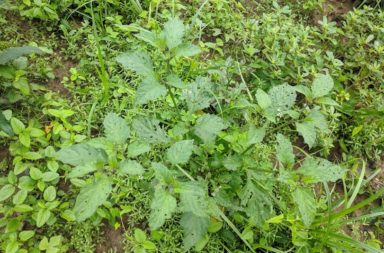Sugardine, a home remedy for wound care, is an inexpensive and easy way treat any skin infection on humans or animals. Horse trainers and farriers have been using and recommending this simple homemade wound treatmet for many years.
When there is a shortage of antibiotics and antiseptic creams preppers must become their own doctors in order to survive. Neglecting to properly treat even small wounds can lead to infections.
Sugardine reduces the chance of infection or sepsis when applied to wounds. If caught early enough and the wound is not that severe, then you may not need an antibiotic to prevent infection. It is very efficient in drawing out infection from a wound.
I am not a doctor nor do I play one on TV, so it is best to check with your doctor and keep in mind this article is for survival education purposes only.
How Sugardine Works
There are only two ingredients to make sugardine: table sugar and 10 percent iodine. You can use betadine in place of iodine if that is all you have available.
Small amounts of sugar itself feeds bacteria and grows mold. In large amounts, sugar keeps bacteria and fungus from growing by absorbing moisture. Think about your sugar at home on the counter, it becomes hardened and solidifies instead of moldy, as it absorbs moisture when sitting out.
Iodine is an antiseptic. An antiseptic is a substance that prevents the growth of disease. Sugar draws good tissue into the wound and won’t allow the bacteria to grow.
It decreases swelling in the tissue. It also attracts white blood cells to the wound by allowing a new protein layer to grow over it. Sugar also deodorizes the infected wound. After just one treatment with sugardine you will notice significant amounts of healing.
How To Make Sugardine
- Use two parts of table sugar to one part of iodine. For example, one cup of sugar to half a cup of iodine.
- When mixing this you want a consistency of peanut butter or thick honey. If the mixture is to runny it will not pack in the wound well.
You can purchase already made sugardine but it is far cheaper and easier to make yourself.

Storing Sugardine
Store your sugardine in an airtight container with a lid. The mixture may harden up a bit over time but it does not go bad. You just need to work and stir the mix around and then it is ready to use again.
You can even have some mixed up and leave it in your truck, barn and first aid kit. Once you see the work of sugardine you will understand why it is becoming such a popular survival medicine kit item.

How To Use Sugardine
To use sugardine you simply apply the mixed paste by packing it onto the cleaned and dried wound, then wrap it with a bandage. Depending on the severity of the wound, the dressing may need changed several times a day to just once daily.
A more severe wound may need changed every eight hours. If a wound is seeping it will need changed frequently as a drenched sugardine bandage could do more harm than good. I cannot stress enough to be sure that you check with your doctor if you have an infection or are worried.
Sugardine is able to be used on any wound on any human, horse – or most likely, any type of livestock. I have even treated my dog with sugardine.
Horses have even been treated for laminitis, thrush, and proud flesh with sugardine. Sugardine can be used to treat bed sores,abscesses, cuts, burns and even diabetic ulcers on humans.
Veterinary manuals have teachings on sugardine and that are still used in vet officees today. Farriers also carry around and use this for wound care when working with horses.
When applying sugardine to a hoof inury it is highly recommended that you really pack it well into the hoof cleft and then bandage portion of the equine’s body. It is also recommended that you make a big duct tape wrap to help hold it on the hoof. Be sure to check the wound and change it daily.
Proven History Of Sugardine
There has been limited studies on humans with sugardine, old records show the use of sugardine for treating wounds and it working. It was always considered an old-folklore antiseptic but in 1981 it was proven to work in a study that was published in the Southern Medical Journal.
In the 5-year study, 605 human patients were treated with sugardine. Almost all of them healed more quickly with sugardine than with any other treatment they had received.

With the overuse of antibiotics we now have illnesses that are resistant to them. It is best for us all if we can get by without the use of an antibiotic that way when one is absolutely needed it will work. This is where sugardine comes in to play, with this natural remedy an antibiotic may be avoided. There are also claims from hospitals and doctors that with the use of betadine the wound treatment costs less and there is less need for skin grafts as the sugardine promotes new growth.
Sugardine is a must for any prepper as it is easy to make and use. It is very inexpensive and when SHTF there may not be a doctor to see or medicine available to take. It is always a good idea to stalk up on the needed supplies before anything happens. I have iodine on hand at all times as you never know when you may need it.


